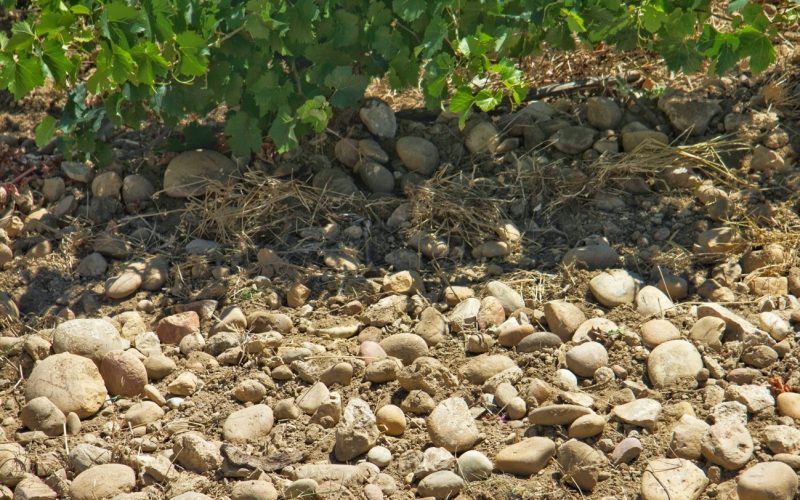Although the first written evidence of the Chateauneuf du Pape vineyard dates back to the 12th century, and the region was presumably already cultivated by the Romans, the history and the rise of its wines have been linked to the Catholic Church since Clement V made Avignon a papal see in 1314. Wine is inextricably linked to the Christian religion, for it is not in vain that it represents the blood of Christ.
At this point, I am not going to unveil the excellence of Chateauneuf du Pape wines, as it is well known, both in reds and whites, but I do want to delve into two characteristics of this area of the Southern Rhône that make it special, such as the soils and the grape varieties used in its production.
The soils of Chateauneuf du Pape are a combination of clays, sands, limestones and marls whose surface is made up of pebbles of different sizes, all of which are the result of the different glaciations that gave rise to the Rhône Valley. The larger pebbles, known as “galets“, retain water and store heat. This natural thermal regulation system, combined with a Mediterranean climate, favours a good ripening of the vines, which are spread over a large plateau between the Rhône River to the west and Mont Ventoux to the east.
This circumstance, typical of Chateauneuf du Pape, is combined with the fact that its wines, since its authorisation in 1936, are usually made with up to thirteen grape varieties, which gives the wines greater complexity. In addition to Grenache Noir, the main variety, blending is permitted with other red and white grapes, such as Syrah, Mourvèdre, Cinsault, Clairette, Vaccarèse, Bourboulenc, Roussanne, Counoise, Muscardin, Picpoul, Picardan and Terret Noir, each of which contributes its innate qualities, such as colour, structure, fragrance, freshness, etc.
The result of this combination of soils and the different grape varieties mentioned, in addition to the specialities that exist within the different sub-zones and the interpretation that each winegrower makes of the landscape, is the production of unique, powerful wines, with great structure, high layers, balsamic, spicy, with notes of blue flowers, violets, lavender and Mediterranean plants, which, of course, would be impossible to imagine outside this designation of origin. In addition to this, there is a dreamlike landscape, where the stone houses, hidden away in peaceful backwaters, merge into one with the lavender fields. It is also a destination where, like all wine-growing areas, you can enjoy exquisite gastronomy. There are so many qualities of the Southern Rhône and, in particular, of Chateauneuf du Pape, that a visit to this wine-growing area so close to our country is a must.
